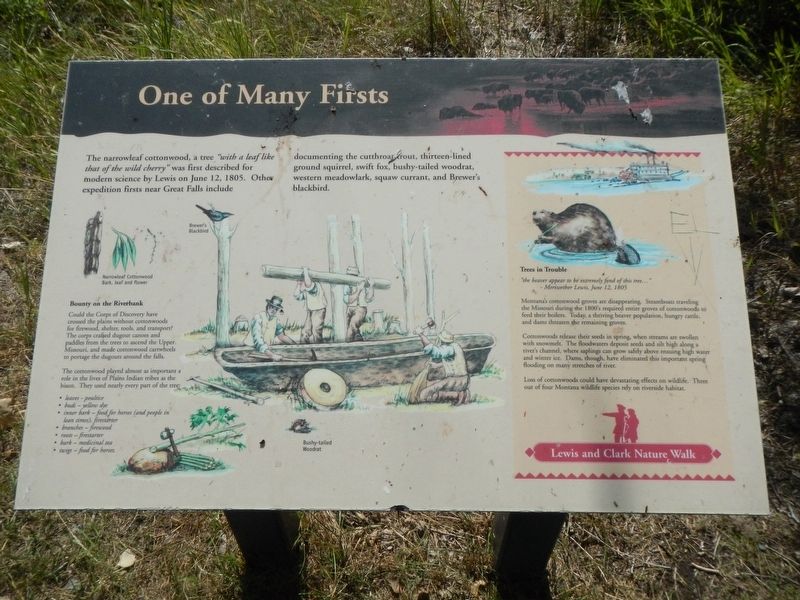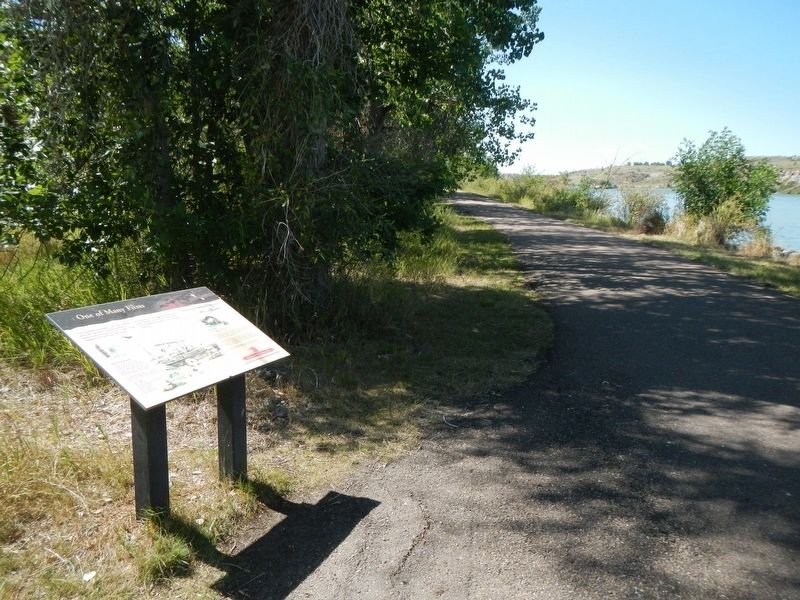Great Falls in Cascade County, Montana — The American West (Mountains)
One of Many Firsts
Lewis and Clark Nature Trail
Bounty on the Riverbank
Could the Corps of Discovery have crossed the plains without cottonwoods for firewood, shelter, tools, and transport? The corps crafted dugout canoes and paddles from the trees to ascend the Upper Missouri, and made cottonwood cartwheels to portage the dugouts around the falls.
The cottonwood played almost as important a role in the lives of Plains Indian tribes as the bison. They used nearly every part of the tree:
• leaves - poultice
• buds - yellow dye
• inner bark - food for horses (and people in lean times), firestarter
• branches - firewood
• roots - firestarter
• bark - medicinal tea
• twigs - food for horses
Trees in Trouble
"the beaver appear to be extremely fond of this tree..." - Meriwether Lewis, June 12, 1805
Montana's cottonwood groves are disappearing. Steamboats traveling the Missouri during the 1800's required entire groves of cottonwood to feed their boilers. Today, a thriving beaver population, hungry cattle, and dams threaten the remaining groves.
Cottonwood release their seeds in the spring, when streams are swollen with snowmelt. The floodwaters deposit seeds and silt high along a river's channel, where saplings can grow safely above ensuing high waters and winter ice. Dams, though, have eliminated this important spring flooding on many stretches of river.
Loss of cottonwoods could have devastating effect on wildlife. Three out of four Montana wildlife species rely on riverside habitat.
Topics and series. This historical marker is listed in these topic lists: Exploration • Native Americans • Science & Medicine. In addition, it is included in the Lewis & Clark Expedition series list. A significant historical date for this entry is June 12, 1805.
Location. 47° 31.912′ N, 111° 14.01′ W. Marker is in Great Falls, Montana, in Cascade County. Marker can be reached from Giant Springs Road near River Drive North. Touch for map. Marker is at or near this postal address: 4201 Giant Springs Road, Great Falls MT 59405, United States of America. Touch for directions.
Other nearby markers. At least 8 other markers are within walking distance of this marker. Of Special Concern (within shouting distance of this marker); The Army's Navy (about 600 feet away, measured in a direct line); A "great" Set of Falls (approx. 0.2 miles away); Seaman: Companion to the Corps (approx. 0.2 miles away); The Experiment (approx. 0.2 miles away); Giant Fountain (approx. ¼ mile away); Pure Springs Along the Missouri River (approx. ¼ mile away); Mobile Villages (approx. ¼ mile away). Touch for a list and map of all markers in Great Falls.
More about this marker. This marker is on the River's Edge Trail below the Lewis and Clark Interpretive Center.
Credits. This page was last revised on December 28, 2019. It was originally submitted on December 28, 2019, by Barry Swackhamer of Brentwood, California. This page has been viewed 149 times since then and 10 times this year. Photos: 1, 2. submitted on December 28, 2019, by Barry Swackhamer of Brentwood, California.

